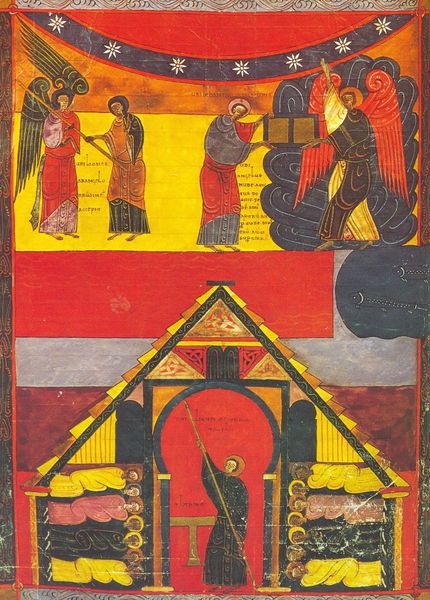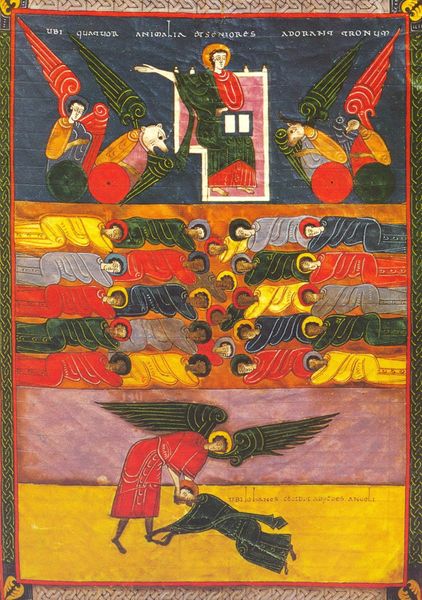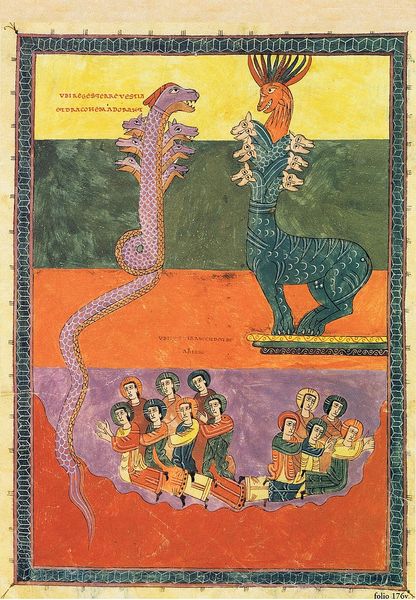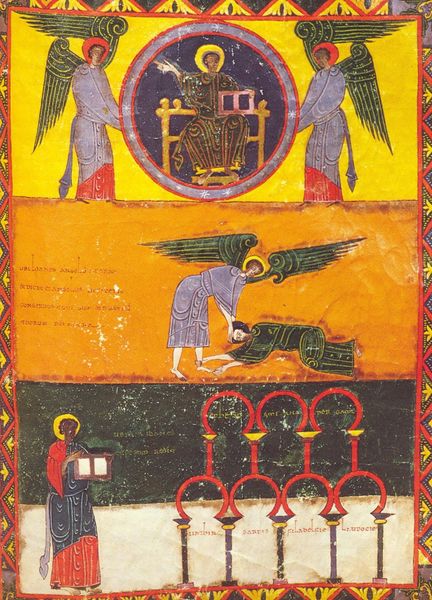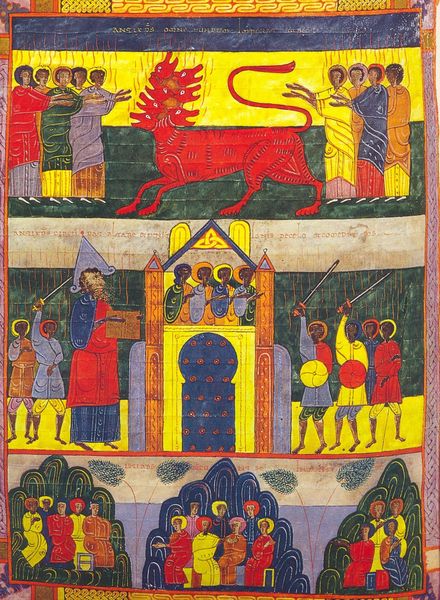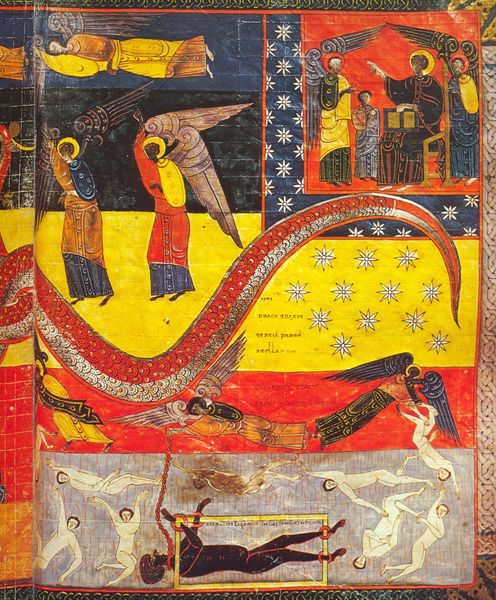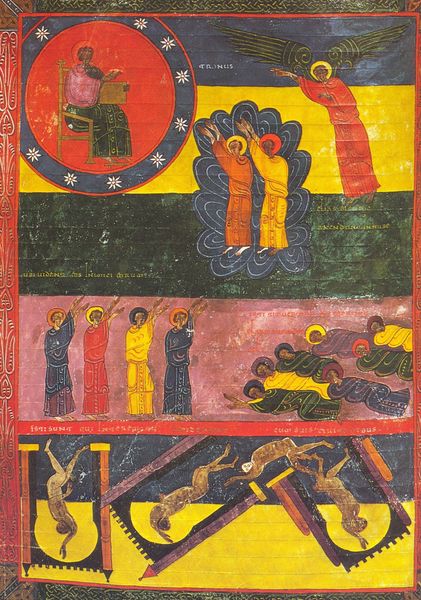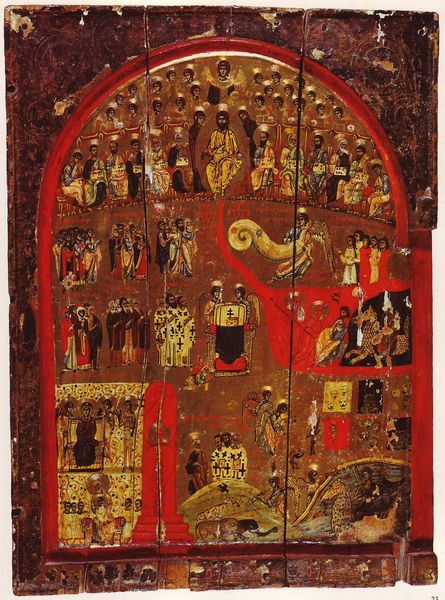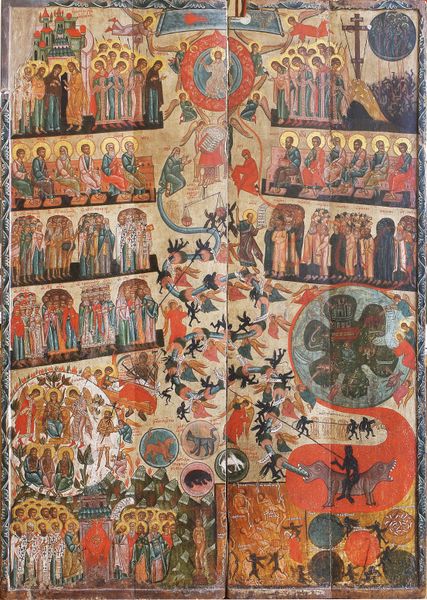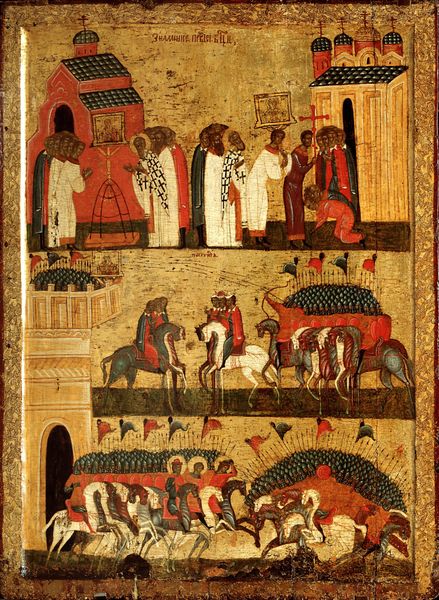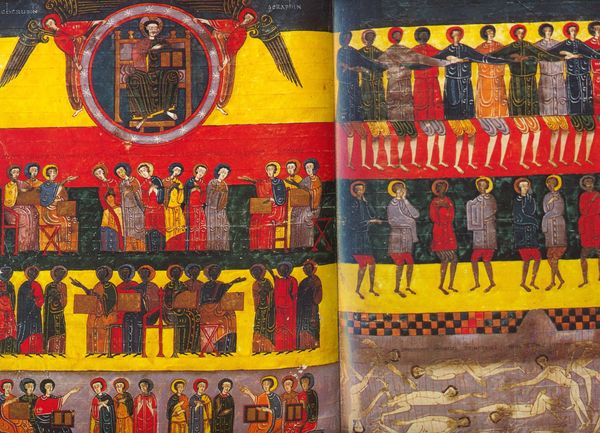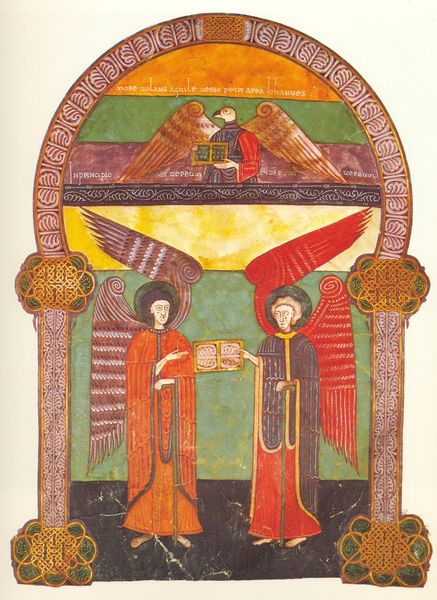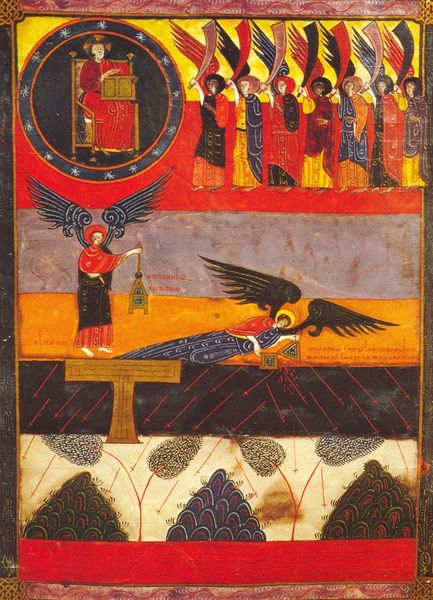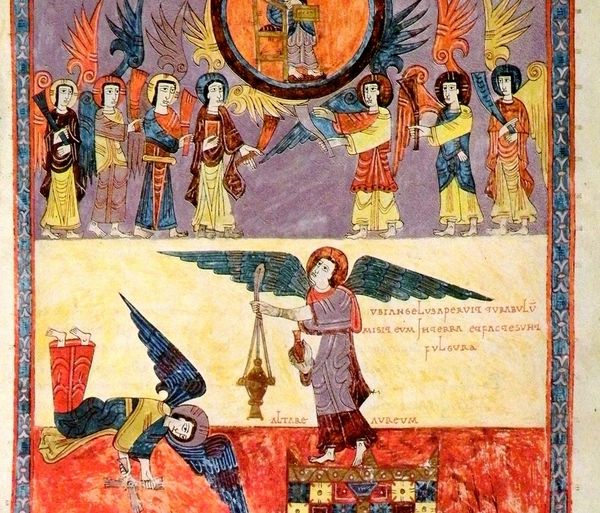
tempera, painting, textile
#
medieval
#
narrative-art
#
tempera
#
painting
#
textile
#
figuration
#
geometric pattern
#
geometric
#
symbolism
Copyright: Public domain
"Adoration of the Mystic Lamb on Mount Zion" was illuminated around 1050 by the artist Facundus. This illustration from the "Commentary on the Apocalypse" shows how images worked within the medieval Christian church, to visualise the text and give form to ideas. Here we see the Lamb of God on Mount Zion, adored by angels above and by a group of musicians below. Made in what is now Spain, the picture can be understood in the context of the Reconquista, as Christian kingdoms gradually asserted control over territories dominated by Islamic rulers. We might also consider the history of illuminated manuscripts in monasteries and cathedrals, and how these institutions shaped the production and reception of images. The bright colours and simplified forms work to create a clear, symbolic depiction of religious belief. To understand the image more fully, historians might research the role of art within the medieval church, as well as the political and social context of the Reconquista, always remembering that the meaning of art is contingent on its social and institutional context.
Comments
No comments
Be the first to comment and join the conversation on the ultimate creative platform.
